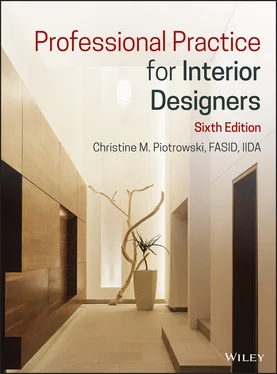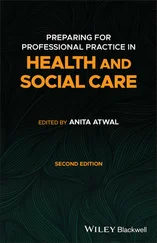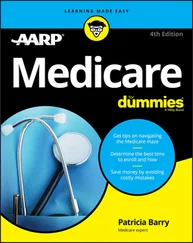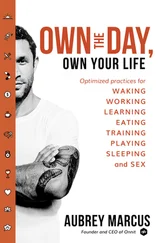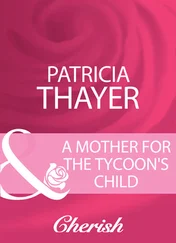Christine M. Piotrowski - Professional Practice for Interior Designers
Здесь есть возможность читать онлайн «Christine M. Piotrowski - Professional Practice for Interior Designers» — ознакомительный отрывок электронной книги совершенно бесплатно, а после прочтения отрывка купить полную версию. В некоторых случаях можно слушать аудио, скачать через торрент в формате fb2 и присутствует краткое содержание. Жанр: unrecognised, на английском языке. Описание произведения, (предисловие) а так же отзывы посетителей доступны на портале библиотеки ЛибКат.
- Название:Professional Practice for Interior Designers
- Автор:
- Жанр:
- Год:неизвестен
- ISBN:нет данных
- Рейтинг книги:4 / 5. Голосов: 1
-
Избранное:Добавить в избранное
- Отзывы:
-
Ваша оценка:
- 80
- 1
- 2
- 3
- 4
- 5
Professional Practice for Interior Designers: краткое содержание, описание и аннотация
Предлагаем к чтению аннотацию, описание, краткое содержание или предисловие (зависит от того, что написал сам автор книги «Professional Practice for Interior Designers»). Если вы не нашли необходимую информацию о книге — напишите в комментариях, мы постараемся отыскать её.
Professional Practice for Interior Designers
Professional Practice for Interior Designers — читать онлайн ознакомительный отрывок
Ниже представлен текст книги, разбитый по страницам. Система сохранения места последней прочитанной страницы, позволяет с удобством читать онлайн бесплатно книгу «Professional Practice for Interior Designers», без необходимости каждый раз заново искать на чём Вы остановились. Поставьте закладку, и сможете в любой момент перейти на страницу, на которой закончили чтение.
Интервал:
Закладка:
When you arrive, now you are on stage. Be sure to smile and greet the receptionist in a friendly professional way, tell him your name and, with whom you have an appointment. Most likely, you will be told to have a seat. Try to relax and think positively about the way you will conduct yourself and the outcome of the interview. Try to use this time to compose yourself by reading a magazine. Do not use your cell phone—in fact turn it off before you greet the receptionist—fiddle with your portfolio, briefcase, or handbag.
You may be asked to fill out some type of form that either compliments what they had online, or in addition to that information. Your paper resume copy will help you with this task. Note that this type of document or the job application cannot ask for information that is considered illegal, such as marital status and age. More on that is included later in this chapter.
If you are interviewing out of state, there is a possibility that someone from the office will meet you at the airport. If you are to go right to the office for the interview, you will need to travel in professional business attire. If the interview is the next day, travel in casual business attire, not shorts and t‐shirts! Of course, you will know this ahead of time, and your preparation for this is to travel in professional casual dress or professional apparel if you know you are going right into the interview from the airport. It also helps to know what the person looks like or to arrange a meeting place so you can easily contact this person.
What to Wear to an Interview
What you wear to the job interview is a part of the overall impression that you will leave with the interviewer. It will not get you the job, but it might lose it for you. Many interior design professionals find it acceptable to be trendy or even casual in their everyday business apparel. However, most interviewers expect more conservative apparel for the interviewee. If you have researched the company as well as you can, you will have some idea of what normal business attire is like at that design firm. Nonetheless, it is smart to dress more conservatively even if you know the firm is very casual about normal work attire.
Here are some quick tips:
Wear apparel that is comfortable and professionally appropriate.
Business suits for men and women are standard, with ties for men.
Refrain from using lots of cologne or perfume. Fragrances can be allergic to some people. But so can body odor so be sure you are freshly groomed.
For women, sundresses, sleeveless dresses, or low‐cut dresses do not project the kind of impression that businesspeople like to see.
Refrain from wearing anything that attracts more attention to your outfit than to yourself.
Even in our enlightened society, tattoos can be offensive to some. Hide tattoos as best you can and carefully consider whether you want to retain any body piercings. Remember that the clients you might be working with are less inclined to appreciate body art.
What you wear to the interview and the image you project can have an impact on the salary offered. Someone who comes to a job interview sloppily dressed will be taken less seriously even if she is highly talented.
Refer to Chapter 14for additional discussion about business attire in the office.
Interview Basics
As an old advertisement once put it, “You only have one chance to make a first impression.” Now is that chance, and it can be absolutely critical to the outcome of your interview.
You have done your homework and are prepared for this important meeting. When you are approached, smile! Say hello, and introduce yourself. Be prepared to shake hands by holding any items you have brought in your left hand.
When you arrive at the conference room or office where the interview will be held, wait for some indication from the interviewer as to where to sit. If she does not make any indication as to where to sit, choose a chair that is either directly across from the interviewer or at a 90° angle. These two positions make it easier to show your portfolio and maintain eye contact.
Remember that the purpose of the interview is for the employer to get to know you personally, ask you questions, and try to evaluate whether you would be a good addition to the firm. The interviewer will be looking for information and personal conduct that shows you will be able to do the job and will fit in with the existing team. If the applicant is an experienced professional, the interviewer is also looking for clues that she is even willing to work for the firm.
As you are being interviewed, keep several things in mind:
Refrain from distracting mannerisms such as fussing with your hair or accessories, or playing with a paper clip or pen.
Pay attention to your own body language; don't slouch or otherwise allow your body language to communicate disinterest.
Listen carefully at all times. Do not fall into the trap of thinking about what you want to say while the other person is talking.
Ask for clarification if the interviewer says something you don't understand.
Think before you speak, and do not interrupt the interviewer.
Use eye contact; smile, and show interest.
The interview is a time for you to evaluate whether this particular firm is really the kind of firm for which you wish to work. Just because a firm has a good reputation does not mean that you will want to work for it. Create your own internal list of what you want to know about the company through the questions you will ask during the interview.
The employer has already formed some sort of impression of you from the information she has gleaned from social media and your initial interactions. Now that you are in the actual interview environment, it will be helpful to point out some interview tactics that the employer might use.
After the initial small talk that will not doubt start the interview, it is common for the interview to start with “Tell me about yourself.” You have prepared yourself for this type of question, so tell them! But don't simply repeat what is in your resume or otherwise has been posted about yourself.
Understand that there are different styles of interviews that might be used. The most common style is the situational interview where the employer might ask a lot of questions like, “What would you do if the client vetoed every single design idea you presented at the final presentation?” The interviewer is trying to see how you think on your feet. Briefly think about the question and then provide an answer.
In some cases, the employer will purposely ask you questions that will put you under even more stress than you are already experiencing. The idea, as far as the employer is concerned, is to find out how you might react under the worst conditions. Stay calm. It's not a personal attack though the tough sounding approach may seem to be. And do not become sarcastic or defensive. If the interview is conducted in a particularly stressful or abrasive manner, you might not want to work at that company anyway!
Some firms use team or multiple interviews. This means that: more than one person will question you during the interview; you will be passed from staff member to staff member during the interview period; or you may have to return for additional interviews with the same or other people. This happens frequently in larger design firms, where an ability to fit into the team and the existing company culture are important.
Understand that everyone probably has a preplanned part to play in the interview. One interviewer may be casual, another may be formal, and another may appear not to be interviewing you at all but observing your behavior. Be respectful of everyone, and be prepared for a long interview process.
Читать дальшеИнтервал:
Закладка:
Похожие книги на «Professional Practice for Interior Designers»
Представляем Вашему вниманию похожие книги на «Professional Practice for Interior Designers» списком для выбора. Мы отобрали схожую по названию и смыслу литературу в надежде предоставить читателям больше вариантов отыскать новые, интересные, ещё непрочитанные произведения.
Обсуждение, отзывы о книге «Professional Practice for Interior Designers» и просто собственные мнения читателей. Оставьте ваши комментарии, напишите, что Вы думаете о произведении, его смысле или главных героях. Укажите что конкретно понравилось, а что нет, и почему Вы так считаете.
